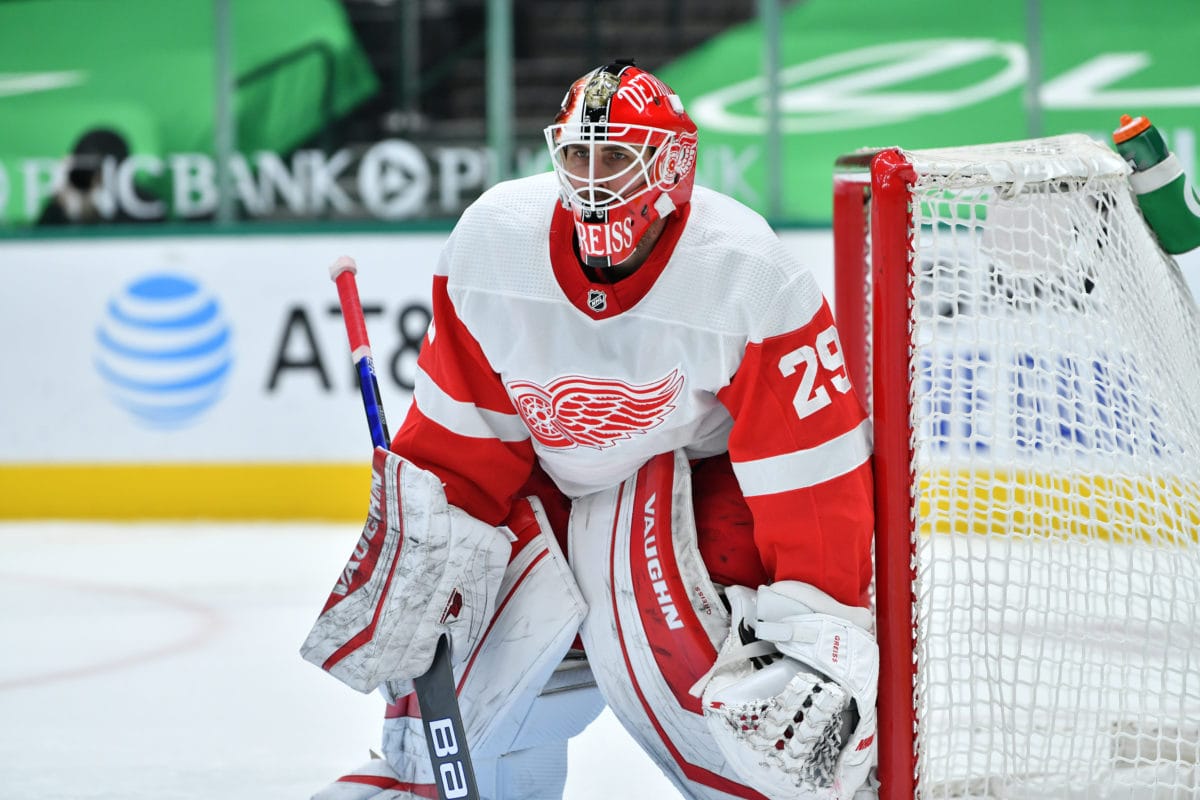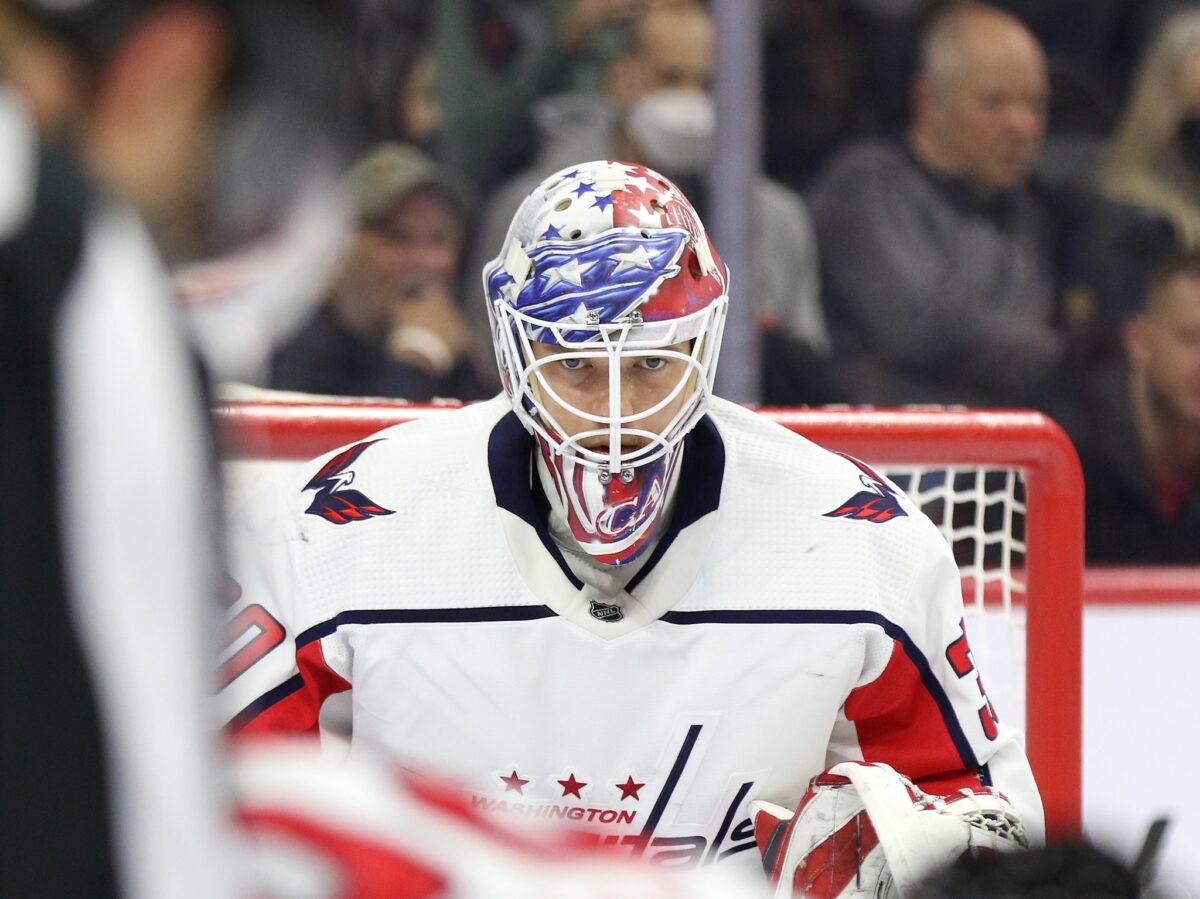After trading the rights of Ville Husso and letting Charlie Lindgren walk, the St. Louis Blues signed veteran goaltender Thomas Greiss to a one-year deal.
Related: 2022 NHL Free Agent Signing Tracker
The Blues now have Jordan Binnington as their starter and Greiss as their backup, a significant downgrade from last season with Husso. They were always going to downgrade from what Husso did last season as their “backup,” but this feels like a significant one, and there are many reasons why.
Rough Season With the Red Wings
It’s fair to say that the Detroit Red Wings had a poor defense in front of Greiss last season, but his numbers still need to be taken into account. He has an injury history and has not been consistent for quite some time, even after spending five seasons with the New York Islanders, who had a quality defense for a few of those seasons.

In 31 games last season, Greiss had a save percentage (SV%) of .891 and a goals saved above average (GSAA) of minus-13.7. His GSAA was the sixth-worst among 70 active goaltenders, which is hard to believe. A lot of these stats could use some context behind the Red Wings’ defense, but it’s not good either way.
The advanced stats don’t favor him either, and the fact is that the Blues need a reliable backup that can play a lot of games if needed behind Binnington and Greiss is not that. I wouldn’t argue that Lindgren would be that option either, but the fact remains that Greiss should not have been a target for the Blues unless the deal was league minimum. It’s amazing to me that he was able to fetch $1.25 million on this deal; given his age and numbers last season, that’s mind-boggling.
He’ll Turn 37 During the 2022-23 Season
It’s true that Greiss will turn 37 this season, but he’s only played in 347 games throughout his career. Some of that is due to being a backup and some of it is due to injury — either way, it’s not ideal for Greiss’ longevity. If the Blues could trust Binnington to play 60 games or more in the regular season, signing him makes a bit more sense. But they clearly can’t trust him to do that and there will be more asked of Greiss than expected.
The analytics tell a story of poor play from Greiss, with nothing to write home about other than his elite rebound control. To make matters worse, the Blues don’t seem to have any interest in truly upgrading their below-average defensive unit. There’s always the chance that he surprises everybody and bounces back, but the signs point to that not happening.
Better Options on the Market
There were better options on the market over Greiss in my view, despite a thin goaltending market. The first option would be Ilya Samsonov, who signed a one-year deal worth $1.8 million with the Toronto Maple Leafs.

Samsonov is only 25 years old and has potential, and it’s also more likely that he would be able to take on a bigger workload than Greiss will. I would have liked to see the Blues spend a little bit more on a backup and find a younger one, too. While his numbers were ugly last season, he’s shown a lot more in recent seasons over Greiss, including a solid playoff run for the Washington Capitals last season.
The other option that would have been ideal is Eric Comrie, who signed a two-year deal with a cap hit of $1.8 million to go to the Buffalo Sabres. Comrie had elite numbers for the Winnipeg Jets last season, tallying a .920 SV% in 19 games. He’s also just 26 years old, but I get the sense that the Blues had zero interest in giving multiple years of term to a backup goaltender.
What all of this tells me is that general manager Doug Armstrong is fully bought into Binnington for the 2022-23 season and beyond. While he made the commitment with the six-year extension during the 2020-21 season, he re-committed after trading Husso and signing a 36-year-old backup. This is certainly a puzzling move, as I have said all offseason, Armstrong still deserves the trust of the fans.